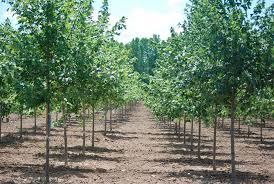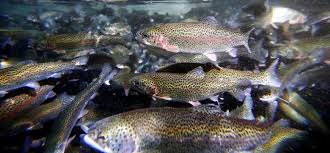Overview
Discussions of different types of ecosystems often include the many species of plants and animals that are native to a particular biome, with one important exception: the human animals who live there. Human activities have changed the biosphere in many ways.
Human Activities
Some of the types of human activities that have changed the biosphere include hunting, agriculture, industrial growth, and urban development. Early humans primarily hunted wild animals and gathered edible plants on their way as they roamed. As crops were grown and harvested, people began to settle in fertile areas, domesticate grazing animals, and build towns and cities. Traditional methods of farming gave way, replaced by large-scale intensive production. Industry used and depleted many resources, as people moved from farms into cities. Urban development changes the habitats of plants and animals.
Sustainable Use
Not all interactions of humans with the biosphere are negative, however. Natural resources can be sustained, and used in such a way that they are not exhausted. Compare clearcutting of timber on a mountainside with selective logging, where forests are carefully thinned and new growth is planted. Crop rotation can replace nutrients in the soil, so that worn-out land can be productive again. Some areas that have been overfished have been closed to allow depleted populations a chance to rebuild.
Renewable and Nonrenewable Resources
Resources are considered renewable if they can be replaced relatively quickly. For example, fast-growing varieties of pine can be planted to replace forest that is logged. Fingerling fish can be grown in hatcheries, then released in rivers and streams. However, renewable resources such as fresh water or air are not unlimited. If a renewable resource is depleted past replenishment, it becomes nonrenewable, such as when an entire ecosystem is destroyed. Other resources are nonrenewable, such as fossil fuels or minerals.
Conservation
Humans also affect the biosphere by focusing on conservation and protecting the environment. Many conservation campaigns focus on protecting endangered species and saving them from extinction. Others protect larger biosystems by setting a tract of land or watershed aside as a park or preserve. Areas that are protected from development often recover their own unique character. For example, the temperate rainforests in Washington State have large stands of old-growth forest that is home to many mosses as well as cone-bearing trees. Some of the plants and animals found there can only thrive in a narrowly-defined biome.
Interested in science tutoring services? Learn more about how we are assisting thousands of students each academic year.
SchoolTutoring Academy is the premier educational services company for K-12 and college students. We offer tutoring programs for students in K-12, AP classes, and college. To learn more about how we help parents and students in Charlottetown, PEI visit Tutoring in Charlottetown, PEI




